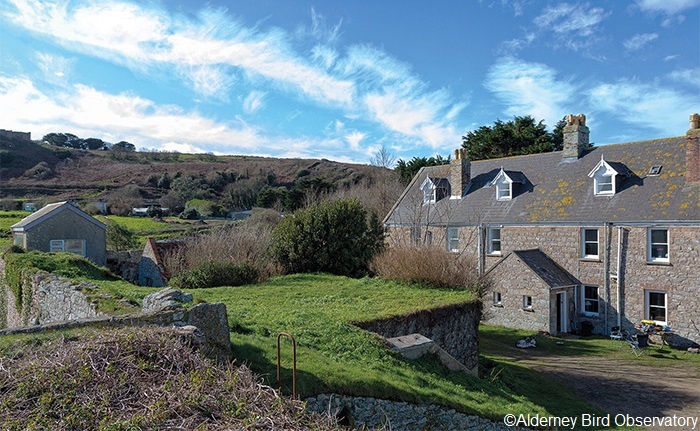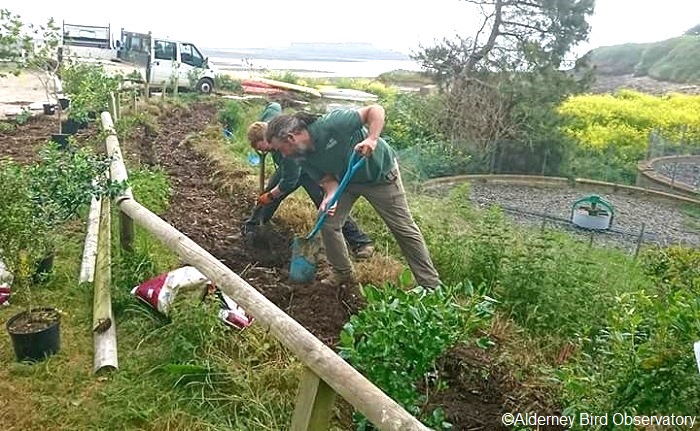ZEISS and NABU jointly protect vultures in Kenya
Eurasian Black Vultures and Eurasian Griffons are the most mighty and impressive bird species of Europe. Watching their flight is imposing and captives one.
There are eleven different vulture species in Africa, for which the population has reduced by 65-80 percent in the last 20 years. Alone in Kenya six out of eight species are now classified as critically endangered. To this sad top list belong the Rüppel’s Griffon, African White-backed Vulture, Hooded Vulture, White-headed Vulture and the Lappet-faced Vulture. The Bearded Vulture is already extinct in Kenya.
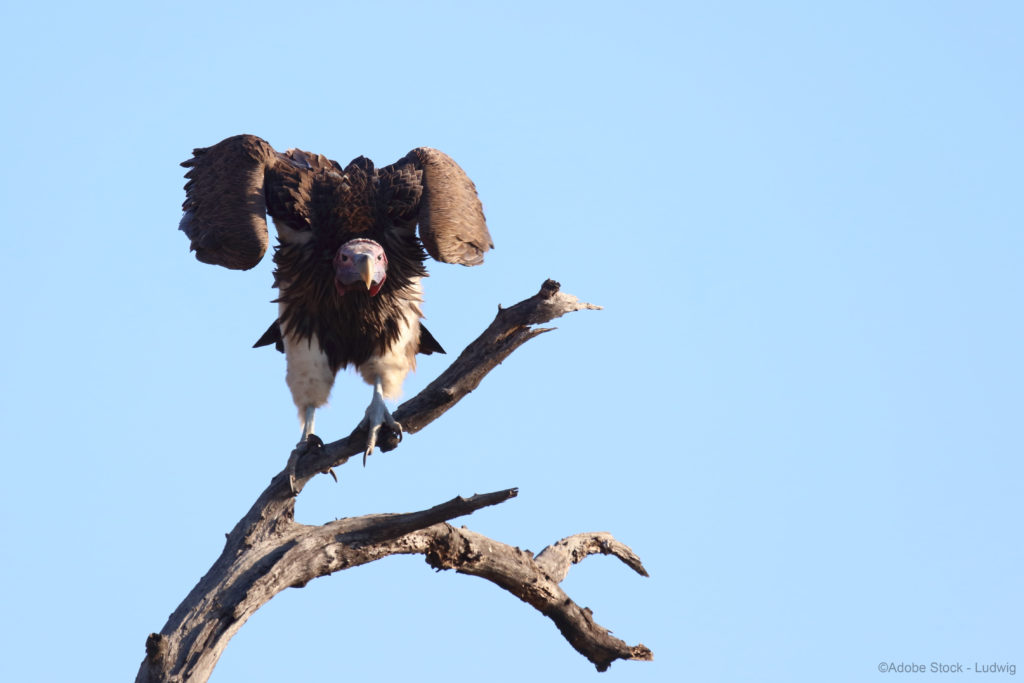
What puts the vultures in Africa so much under pressure that their population is endangered? Unfortunately, the reasons are diverse and hard to get a grip on. One of the most important reasons is the tension between people and wild animals. Predators like lions, leopards, cheetahs and hyenas eat domestic animals, which leads the owners of the domestic animals to poison the wild animals. When vultures eat the carrion of the poisoned animals they also die from the poison, which was not meant for them. Here the positive function of the vultures as “health police”, which is often underestimated in their function for humankind and domestic animals, gets fatal for them. Usually, vultures prevent harmful germs from spreading, which could endanger people and animals.
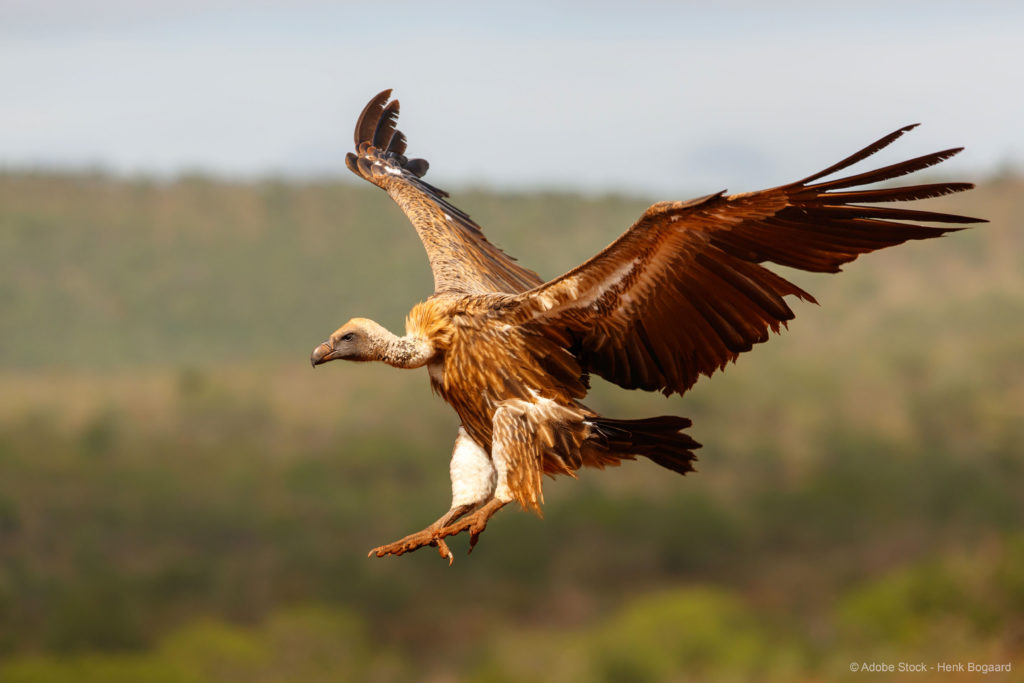
In addition, there is the topic of poachers killing vultures in order to cover up their tracks from the rangers in protected areas. A larger number of vultures would make rangers suspicious regarding killed animals. Unfortunately, the international trade in vulture body parts used in traditional medicine or for practicing various rituals in superstition, has increased. That is why poachers find customers for the results of their criminal behavior. In addition to all the targeted human encroachment, the consequences of human life pose a threat to vultures: power lines cause electrocution and the different form of using land deprives vultures from their nutritional base.
An exclusive, safe restaurant for vultures
So what – can be done to improve the situation for vultures? For this – goal a unique cooperation has formed of the German organization NABU International Nature Foundation together with Mugie Conservancy, the Cranes Conservation Volunteers and the Kenya Wildlife Services, who are also financed by ZEISS. In the North of Kenya, in the region of Leikipia, the cooperation develops a prototype – for a safe and guaranteed poison-free feeding station for endangered vultures and other birds of prey in Kenya. This is the basis for new, identified safe vulture zones in Northern Kenya.
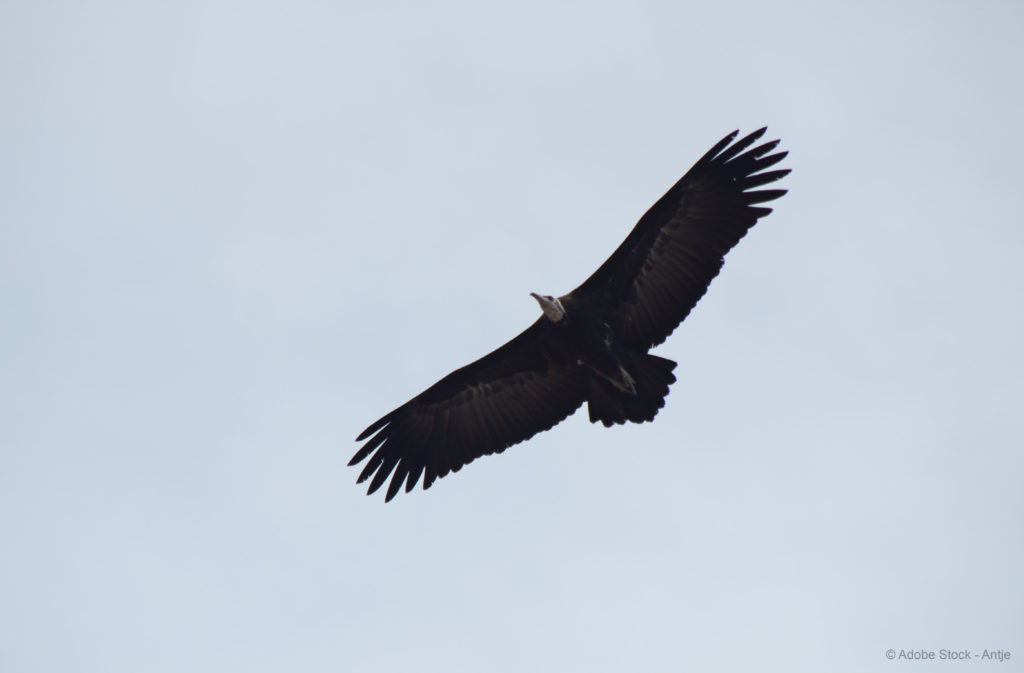
ZEISS funds support the funding of a local employee who works to protect the species of vultures and other birds of prey. There will be awareness campaigns in the local communities and – for farmers about the ecological value and the importance of vultures and birds of prey regarding health protection of people and domestic animals. Farmers also learn how to correctly dispose poisoned birds and mammals. But it is not only about awareness as the farmers need practical support, which they get with safe fences to keep away predators.
In schools the kids learn early in life in different teaching units about birds of prey and get the chance to provide the birds a better future for conserving their species. In addition, the vulture feeders with non-toxic meat, which are set up and thus represent a kind of restaurant with risk-free enjoyment for the birds, are crucial.
The Corn Bunting – The Secretive Neighbor Next Door
Successfully protecting birds in rural areas
The Rhine Plain, near the German city of Mannheim, end of May, 8:30 a.m. For more than two hours, Julia Staggenborg has been painstakingly following an inconspicuous corn bunting with her ZEISS binoculars. She didn’t dare look away, even for a second, since a brief moment of inattention could undo an entire morning’s worth of hard work. Julia was tracking a female corn bunting. She had spotted the bird, bearing a load of dry grass in her beak, just after setting out that morning. This particular specimen was obviously busy building a nest, and Julia wanted to identify its location.
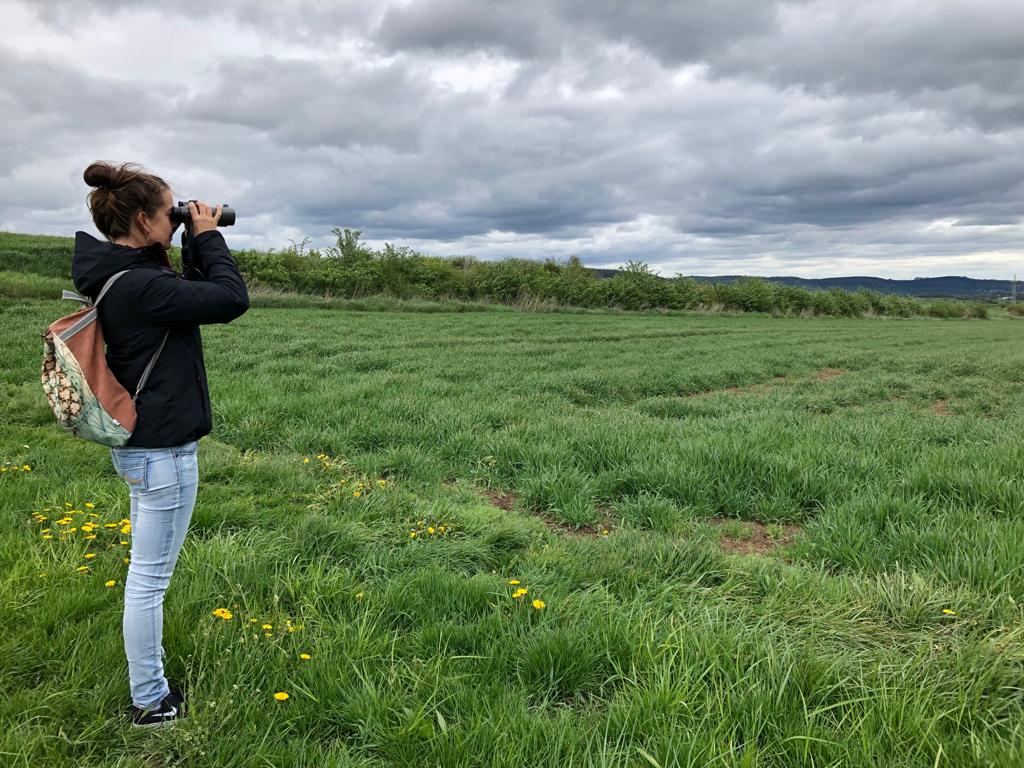
Julia has been working at the University of Tübingen on a project to protect the corn bunting since 2017. The seemingly unremarkable species of bird is considered a characteristic species for extensive, wide-open agrarian landscapes. Particularly in areas like these, it’s especially difficult to effectively combat large-scale biodiversity loss.
The verdict is still out on which environmental protection measures ensure suitable habitats. Frequently, very specific requirements must be met if the land is to sustain a particular plant or animal species. In many cases, little detailed information is available. ZEISS has been supporting the species conservation project since 2016.
Based in the different regions and funded by the Stiftung Naturschutzfonds Baden-Württemberg, a foundation devoted to the protection of wildlife in the area, the project has been able to come up with appropriate conservation measures on the basis of the Corn Bunting’s activities. Working together with farmers as well as environmental protection and agriculture agencies, suitable funding measures have been developed and are being refined in an ongoing process in line with the corn bunting’s needs.
The project team members have been paying particular attention to successful breeding. The corn bunting breeds late in the year, which is especially problematic in agricultural regions because the fledging period frequently conflicts with farming activities. Precisely for this reason, Julia wanted to find out for sure if the bird’s nest in the Rhine Plain was actually located in the farmer’s field. The first hay harvest of the season was scheduled to start the following week, which would invariably destroy the nest.
Or was the nest actually located within the winter barley growing on the adjacent field? If so, then there was no immediate risk because the young corn buntings would have long since left the nest before the start of the harvest.
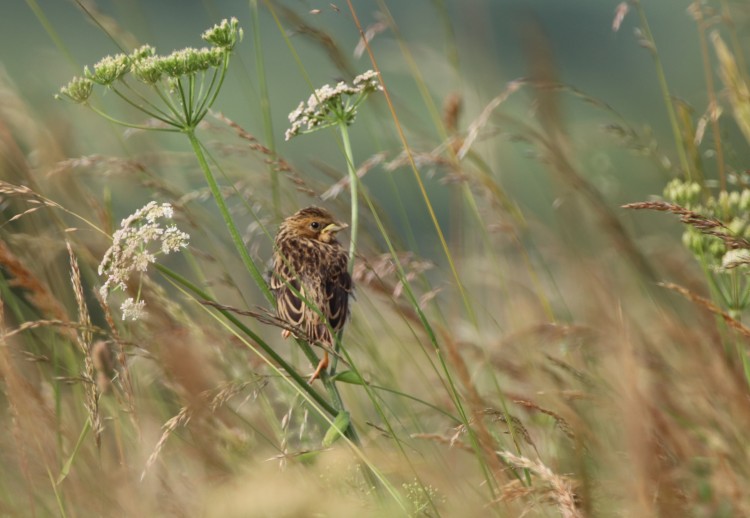
The corn bunting is a true homebody during the breeding period. If the bird notices a passerby or a bird watcher, it lets out a warning cry and ceases any activities in the nest, even if the person is still a considerable distance away. This makes it difficult to spot them, their nests and, consequently, to implement targeted measures to protect them. Thanks to good cover and a high-performance optic, Julia’s conversation efforts paid off.
Potential conflicts between the bird’s particular nesting sites and agricultural needs are just one of the issues being studied. The project members are also focusing on the question of if and where the corn bunting can find sufficient food to feed its chicks, i.e. insects and their larvae. So Julia observes the female birds as they fly in search of food, carefully documenting where they find small butterfly caterpillars or large green grasshoppers to take back to their nests. To be sure, plenty of foliage and fallow ground are quite important, but even areas like conventional farm fields covered with winter wheat offer a surprisingly large food supply for the corn bunting.
The project’s initial findings also reveal substantial regional differences, a clear sign that no single measure will guarantee a happy outcome for the corn bunting or other endangered species living in rural areas dominated by agriculture.
At 8:53, the female corn bunting returned again with more material for her nest. It was evident that she was building it under a prominent knapweed plant in the hay field. The same afternoon, Julia contacted the farmer, who agreed to postpone the harvest in that part of the field by three weeks in return for compensation from the environmental protection authorities. The mother corn bunting and her brood were saved.
ZEISS Sponsors Grand Prize for the 2019 Kruger Bird and Wildlife Challenge
The Kruger Bird and Wildlife Challenge was held in South Africa this past February. Organized by BirdLife South Africa, Middlepunt Wetland Trust and Rockjumper Birding Tours, the event was started by BirdLife International to support conservation efforts for the critically endangered white-winged flufftail (Sarothrura ayresi). This very rare African bird is found in just a few regions of Ethiopia and South Africa. Living in especially thick vegetation, it is hard to spot the bird using traditional methods. Thus there are only a few photographs of this bird species, most of which show captured specimens. Financial support is urgently needed, primarily to preserve the small bird’s remaining habitat and support local endeavors undertaken by the different organizations.
Eight teams, each comprising nine bird watchers and conservationists, headed to the event at Kruger National Park. While no white-winged flufftails reside there, the location is ideal for hosting an event of this size. Kruger National Part is one of the few remaining nature reserves on the planet where sufficient land is still available to establish a stable equilibrium between the different species. This has long since ceased to be the case in nearly all nature reserves found in central Europe due to their limited size and the use of chemicals for intensive farming in the surrounding areas. More than 500 bird and over 150 mammal species have been spotted in Kruger National Park, and the teams had to record as many of these as possible.
Over a period of nine days, the participants made their way through the entire park and spent the night at different camps. Unlike many other competitive birding events, including Champions of the Flyway held in Israel, the challenge was not just to spot the largest number of different species. Instead, each species was scored on a scale of one to three, with more points going to less common or difficult-to-find birds.
Thus the world’s biggest heron, the Goliath heron, and the large martial eagle only earned teams one point because these birds are impossible to miss, while spotting a dusky lark earned three points. The peregrine falcon, which is likewise a rare find in Kruger National Park, could also earn a team three points.

For birds commonly found in Europe during the summer months, Kruger National Park is an important destination during the winter migration. These species include the white stork, lesser spotted eagle, Eurasian hobby, barn swallow, common house martin and Alpine swift. Large numbers of one of the pretties birds in eastern Europe, the European roller, spend the winter in the park, taking advantage of the broad selection of various insects as a food source. Other avian species from up north join in, including European and blue-cheeked bee-eaters, whose colors are almost a match for the southern carmine bee-eater. Kruger Natural Park is one of the last natural refuges for vultures in Africa, especially the white-headed and lappet-faced vultures, which are endangered due to chemically contaminated animal cadavers. Conservation groups from Europe and Africa are currently trying to save these animals from extinction, primarily through efforts targeted at informing the local population. ZEISS specifically supports their efforts as part of the Champions of the Flyway event.
The team from BirdLife International together with representatives from Rockjumper Birding Tours and ZEISS won the competition by spotting 328 different species of birds, earning them 496 points. They even won in the “mammals” category by recording 64 species, giving them a total of 560 points. The team “Ayre’s Broomtails” was close behind, having spotted 318 different bird and 58 mammal species, earning them 531 points in total. The “BirdLife International” team also won the prize for discovering the rarest bird during the event, a golden pipit – a rare sight in South Africa. All the teams and assistants had the chance to see and then photograph the bird themselves.
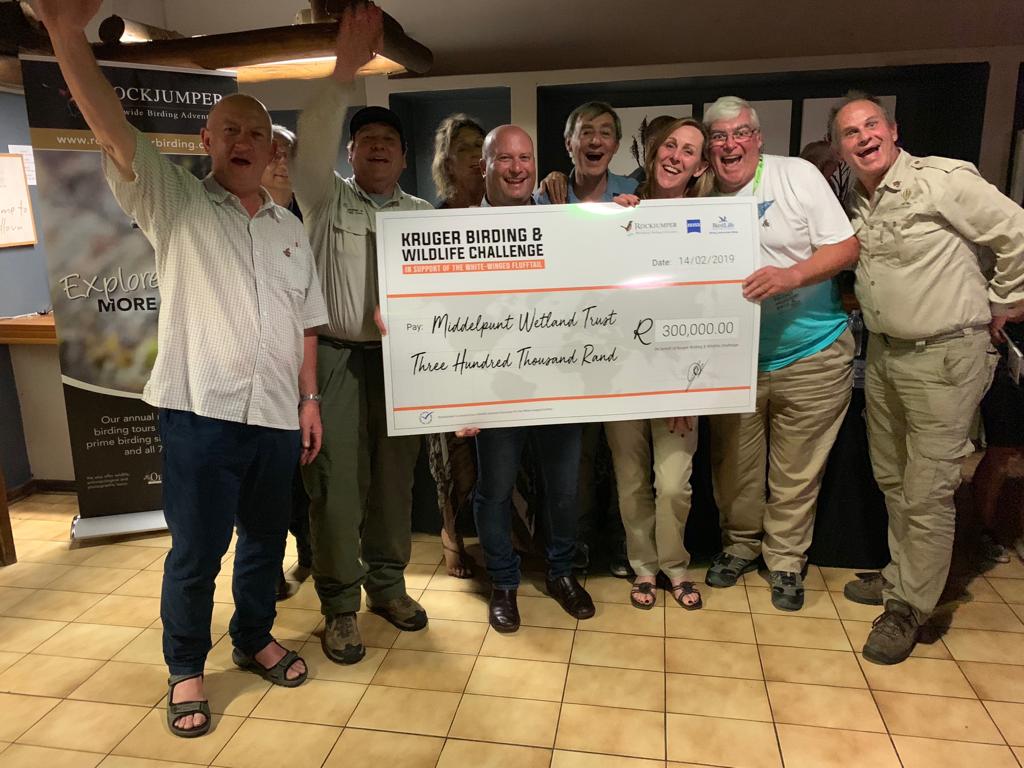
ZEISS provided the grand prize: 10 pairs of ZEISS Terra 8×42 binoculars. The event ultimately raised over 25,000 euros to financially support the conversation of the white-winged flufftail, making this is a promising start for saving this rare bird.
The life of a bird observatory warden
It’s not all about Birding!
It is an extraordinary thing that one of the British Isles, best bird migration highways has been overlooked, until now. At Alderney bird observatory (ABO), we have had the privilege of being the first to consistently monitor the island’s incredible bird migration and begin to do this unsung location some justice.
I took a career break from the metropolitan police service early 2016 to come and explore the potential of Alderney with a view to establishing the Channel Isles first accredited bird observatory. The dream became a reality as the Bird Observatories Council proclaimed Alderney as the British Isles 20th observatory in February 2018.
From the outset, largely because of where Alderney is situated just off the French cotentin peninsula, I felt confident we would see good bird migration through the island, but numbers and variety of birds soon far exceeded expectation. Just a couple of weeks into the job I observed the visual migration of 16 Ring Ouzels in off the sea that all came to rest on the fourth green of the golf course adjacent to the observatory. I thought: “This is going to be awesome!” This was further confirmed by one of my first bird ringing sessions resulting in the catching of over 40 Firecrests! Recoveries of ringed birds soon began to illustrate to us that Alderney is situated in such a way that it facilitates birds passing through our location in Spring heading not only north to the UK but also many more travelling northeast continuing along the continent into Northern, Central and Eastern Europe with the reverse effect during autumn migration.
WE HAVE AN INCREDIBLY LONG MIGRATION SEASON HERE THAT CAN BEGIN LATE FEBRUARY WITH EARLY MOVERS SUCH AS BLACK REDSTARTS AND FIRECRESTS.
The return migration continues uninterrupted with Sedge Warblers and Willow Warblers appearing from early July right through to my favourite part of the year when thousands of incoming Thrushes and Finches arrive from October to early December.
Some of the most satisfying aspects of the project have been the improvements to the conservation management of the island that the ABO has instigated and set in motion.
This has included the introducing to the ‘island conservation strategy’ a temporary footpath closure clause for the benefit of wildlife, and the islands first winter seed crop that brought us our first Cirl Bunting record this spring.
This year the observatory successfully lead a project to eliminate rats from the islands’ Common Tern colony resulting in fledged Terns in Alderney for the first time in over 15 years.
Life on this wonderful island has certainly been made easier by the huge support for the new observatory from the local people island wide, and the cooperation and assistance of the States of Alderney. No two days as warden are the same but it’s certainly not all about birding! Everyday involves hours at the desk dealing with emails, enquiries, bookings and other organisational work.
THE STATES OF ALDERNEY BACKED THE BIRD OBSERVATORY PROJECT FROM DAY ONE AND IN 2017 INVESTED AROUND £300,000 INTO RENOVATING.
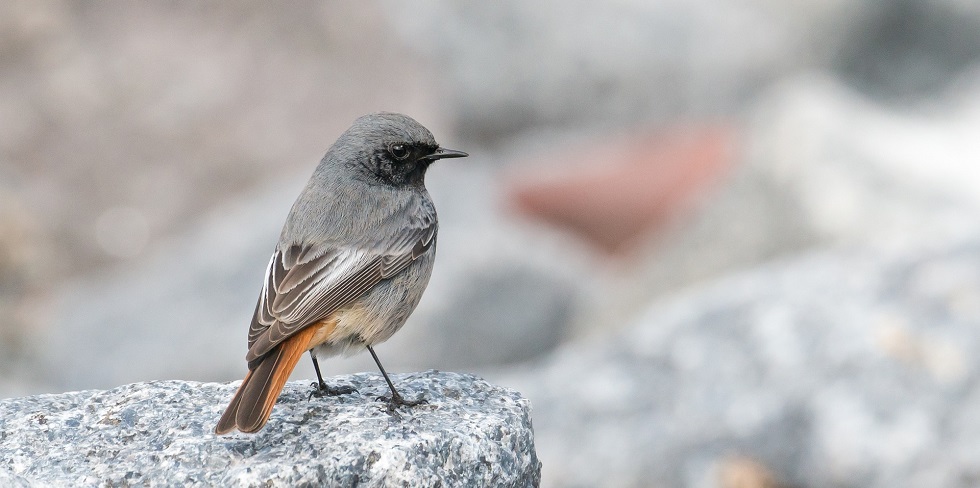
The maintenance of the observatory and grounds, organising events and tours, managing ringing trainees, the list goes on to comply with the national Bird observatory recording standards and maintain our accreditation status, we undertake a daily census walk recording migration – ours takes around 3 hours. We also fit in as much passerine ringing and moth tapping as we possibly can!
Over the last 10 months, renovations have been completed at The Nunnery, a building set within the walls of a Roman Fort overlooking Longis Bay and the French coastline. In July, we host our first official guests in our brand-new self-catering field centre accommodation. A strong committee of knowledgeable and dedicated volunteers has developed along the way making our success story a fine team effort.
As we are unpaid, assistant warden Justin Hart and I both work in other jobs to sustain ourselves; Justin works as a green keeper on the golf course and I run island tours for the visiting tourists and lead tours on Alderney.
Though there is always a long list of jobs outstanding at the end of most days, I’m sure I can safely speak for us both that we feel extremely lucky to be involved in this exciting project.
For my part, being here from the first day when our observatory began operating has been and continues to be a very special experience indeed. It’s just one of those locations where you can get out there and find your own birds.
MORE ABOUT
RELATED STORIES






